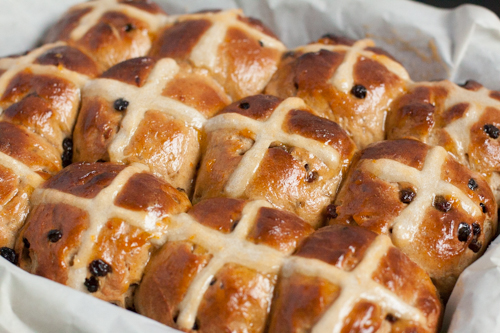Hot Cross Buns
 Friday, March 30, 2018 at 5:24PM
Friday, March 30, 2018 at 5:24PM 
Hot Cross Buns are probably my favourite festive food. The smell of the cinnamon toasting and the taste of them – lightly toasted, thickly buttered – makes me feel all warm and cosy. They are one of my ultimate comfort foods.
I agree with Oliver Thring that “Buns are some of the best things to have emerged from English kitchens”. He gives a potted history of the hot crossed bun. I was interested to discover that the symbology is not Christian in origin – pagans also baked buns and breads marked with a cross. For example, in ancient Greece, breads marked with a cross signified the start of spring; in ancient Egypt, similar delicacies were offered to the goddess of the moon and the Saxons “baked breads slashed with crosses to honour Eostre, their goddess of spring and fertility and the source of our word Easter. The four sections symbolised the four quarters of the moon, or the seasons”.
 Vix |
Vix |  Post a Comment |
Post a Comment | 